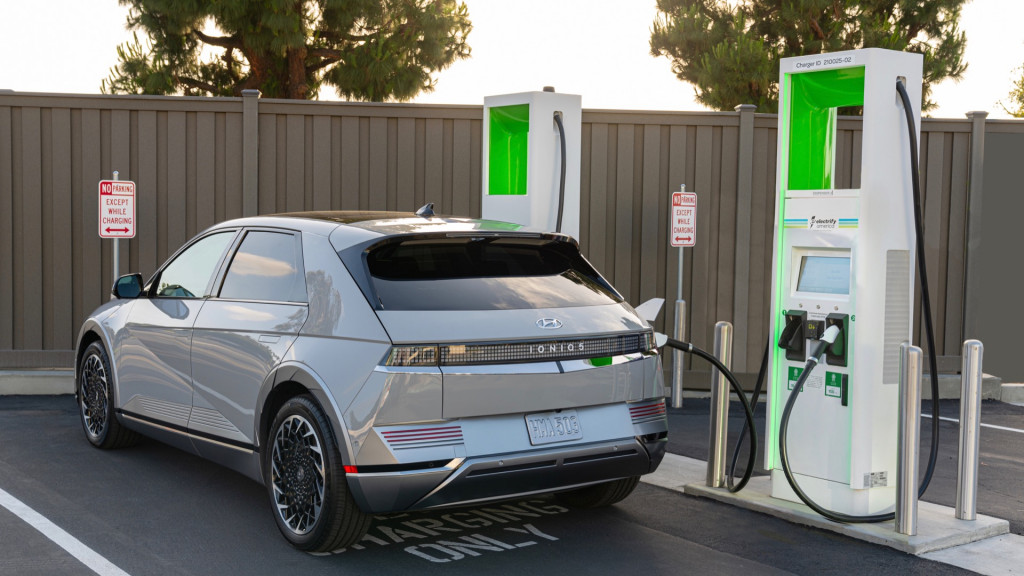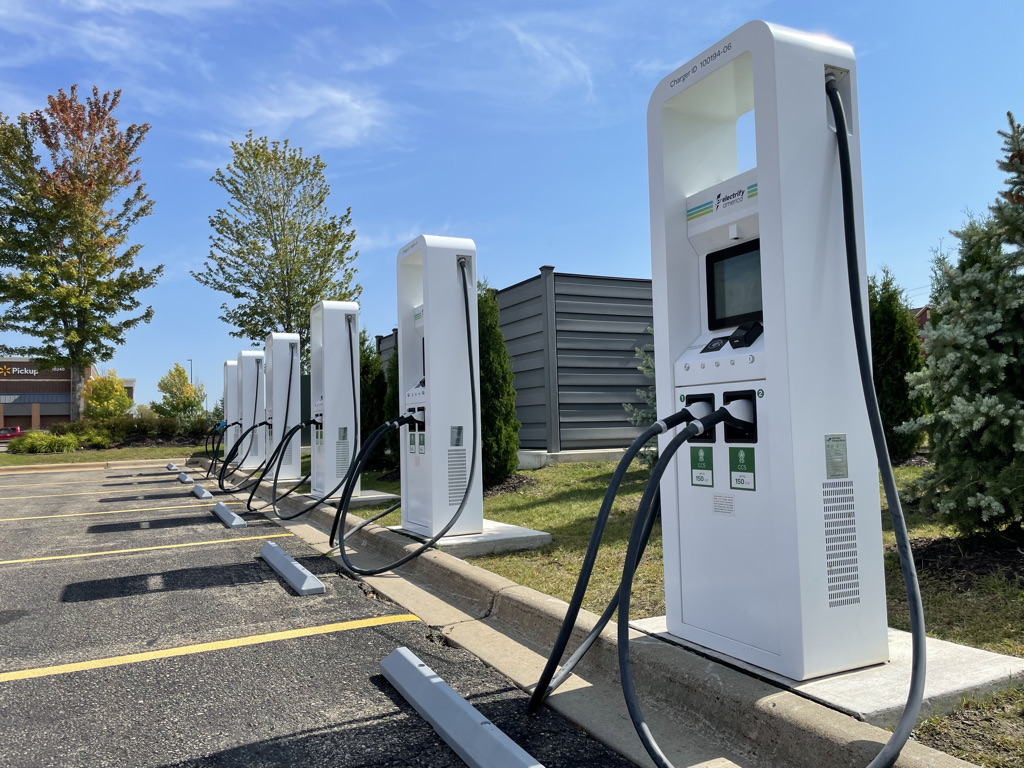Electrify America and IKEA on Thursday announced plans to install EV charging stations for both delivery drivers and the general public at over 25 of the Swedish retail giant's United States locations.
The effort will quadruple the number of chargers at U.S. IKEA stores, and help the company achieve a goal of zero-emission home deliveries by 2025, Ikea and Electrify America said in a joint press release.
The two companies plan to install more than 200 individual DC fast chargers—a mix of 150-kw and 350-kw units—in 18 states for Ikea customers. The complete list includes Arizona, California, Connecticut, Florida, Illinois, Kansas, Maryland, Massachusetts, Michigan, Minnesota, New York, Pennsylvania, Ohio, Oregon, Texas, Utah, Virginia, and Washington.

2022 Hyundai IONIQ 5 at Electrify America DC fast-charging station
The first stations are expected to open later this year, and all are expected to be open by the end of 2023.
In addition to those chargers, IKEA has tapped Electrify Commercial, the fleet business unit of Electrify America, to install more than 225 individual chargers. The release doesn't specify, but it's likely these will be Level 2 AC chargers.
This is the first time Electrify America, which was created and initially funded as part of Volkswagen's diesel emissions cheating settlement, will be installing chargers for both public and fleet use simultaneously.

Electrify America chargers
Electrify America reported rapid growth from 2020 to 2021, and it recently announced investments from Siemens. This marks the first time an outside company has invested in Electrify America, which is looking for additional investments beyond the $2 billion committed by VW to fund its initial network plan, for further expansion.
A study from Umlaut found Electrify America tops in the user experience, although it didn't consider hardware downtime. While that may be an area that needs more attention, Electrify America is trying to address its carbon footprint by buying solar energy. Earlier this year, it announced a deal for enough solar to more than offset the energy its network delivers.












